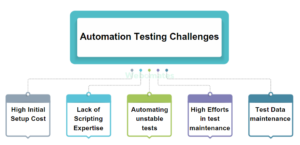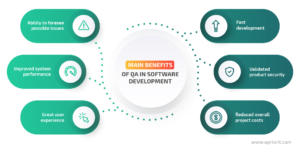Top 10 Common Mistakes In Software Testing And How To Avoid Them
Software Testing is a critical aspect of the software development lifecycle, ensuring that applications meet quality standards before reaching users. However, even experienced testers can make mistakes that can lead to severe consequences, including project delays, increased costs, and unsatisfied users. Explore the top 10 common mistakes in software testing and provide tips on how to avoid them. Whether you’re pursuing a Software Testing Online Course or preparing for a certification, understanding these pitfalls will enhance your testing skills and improve your projects’ overall quality.
1. Inadequate Test Planning
Failing to create a comprehensive test plan can lead to incomplete testing. Test planning should include test objectives, scope, resources, timelines, and deliverables. Without a solid plan, testing may become chaotic and ineffective.
How to Avoid:
- Always draft a detailed test plan that outlines all aspects of testing.
- Review and Update the plan regularly as the project evolves.
2. Ignoring Requirements
One of the most common mistakes is testing without understanding the requirements fully. This oversight often results in missing critical functionalities or features.
How to Avoid:
- Engage with stakeholders to gather clear requirements.
- Create traceability matrices to ensure all requirements are covered.
3. Lack of Test Automation

Automation can significantly reduce the time spent on repetitive tasks and increase test coverage.
How to Avoid:
- Invest in automation tools and train your team through a Software Testing Online Course.
- Identify high-value test cases suitable for automation.
4. Not Prioritizing Tests
Not all tests are created equal. Failing to prioritize testing based on risk can lead to critical issues being overlooked.
How to Avoid:
- Conduct risk assessments to identify high-risk areas.
- Prioritize tests based on business impact and likelihood of failure.
5. Inadequate Test Environment
Testing in an environment that doesn’t mimic production can lead to discrepancies between test results and actual user experiences.
How to Avoid:
- Creation of a test environment that closely resembles the production environment.
- Regularly update the test environment to reflect any changes in production.
6. Skipping Regression Testing
After bug fixes or new feature implementations, skipping regression testing can introduce new bugs and issues into existing functionalities.

How to Avoid:
- Always include regression testing as part of the testing cycle.
- Use automated regression tests to save time and ensure comprehensive coverage.
7. Poorly Documented Test Cases
Test cases that are not well documented can lead to confusion and inconsistencies during testing.
How to Avoid:
- Ensure all test cases are documented with detailed steps and expected outcomes.
- Review and refine test cases regularly based on feedback.
8. Focusing Only on Positive Testing
Testing only for expected outcomes can lead to severe issues going unnoticed. Negative testing is just as crucial to ensure the application handles invalid inputs gracefully.
How to Avoid:
- Include both positive and negative test cases in your test strategy.
- Encourage exploratory testing to uncover hidden issues.
9. Not Involving QA Early

Quality Assurance (QA) should not be an afterthought. Involving QA at the beginning of the development process ensures that quality is integrated from the start.
How to Avoid:
- Collaborate with developers and QA teams from the project initiation phase.
- Encourage open communication to address potential issues early.
10. Ignoring User Feedback
Failing to consider user feedback can lead to missed opportunities for improvement and satisfaction.
How to Avoid:
- Actively seek user feedback through surveys or usability testing.
- Implement changes based on feedback to enhance the user experience.
About Certification
A certification in software testing demonstrates your proficiency and knowledge in the field of software testing. Software Testing Certification validates your skills in various testing methodologies, tools, and best practices, making you a valuable asset to potential employers.
This certification not only enhances your resume but also boosts your confidence and career prospects in a competitive job market. Additionally, obtaining a Software Testing Certification validates your expertise, making you more competitive in the job market and opening doors to new career opportunities.
Conclusion
In software testing, avoiding common mistakes is crucial for ensuring high-quality software and effective processes. Some of the top 10 common mistakes include poor test planning, inadequate understanding of requirements, insufficient test coverage, overlooking edge cases, and neglecting automation. Others involve failing to update test cases as the software evolves, ignoring performance testing, relying too much on manual testing, and poor communication between developers and testers. Inadequate bug tracking and failure to retest after bug fixes are also significant issues.
To avoid these mistakes, testers should focus on clear test plans, thorough requirement analysis, and ensuring comprehensive test coverage. Automation should be utilized where appropriate, and test cases should be regularly updated. Performance testing and clear communication within teams are vital. Additionally, bug tracking systems should be effectively managed, and retesting should be prioritized after bug fixes. Following these best practices can help enhance testing quality, minimize defects, and streamline the overall development process.





